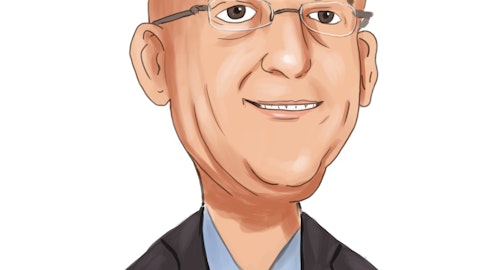Now, all of these novel features, including our AI cloud, our CoPilot system, our adjustable ergonomics, will all be available on a whole line of motorcycles, ranging from the sport bike category that we plan to enter into first, and then into the largest segment, the commuter category, finally into the fastest growing segment, which is the adventure bike category. Our bikes will be priced between $19,000 and $40,000, as I said, with the average price point of our reservations being at $28,000. Now, it’s important to note that the cost of building electric motorbikes is a small fraction of the cost of building a car. But we’re generating price points similar to that of a car company. For example, these Ducati’s and BMWs that you see below are priced between $20,000 and $45,000.
BMW, for example, sells more than 40,000 units a year of some of these bikes. It’s also worth noting that the capital intensity of building a bike is many times more capital efficient than the capital intensity of building a car company. It isn’t burdened by the heavy cost of crash testing or building out a half mile of robots that car manufacturing requires. Also, unlike car manufacturing, motorcycle DOT certification is a self-certification process. So we have a very streamlined path towards production in front of us now. Waiting for these slides. Here we go. So now, about 73% of our order books is generated out of the U.S. – sorry, in the U.S., I should say mainly in California, Florida and Texas. Over the course of 2025 – 2024 to 2025, we expect to be doing most of our shipments into California first.
We also have signed agreements with Vanwall, Auteco and Indika that could generate potentially another $250 million in revenue in the coming years. And then we do have orders outside of the U.S., as you can see in Canada, Europe, the UK and the rest of the world. But we’re really going to focus our priority shipments into the U.S. first. Now, this is the most important slide, if you ask me. Surveys of our reservation holders show that the people ordering Damon bikes are on average 20 years younger than the American average motorcyclist, which means all of our competitors, from Yamaha to Ducati, Honda, et cetera, are still selling to people in their 40s, 50s and 60s, whereas we’re selling to people in their 20s, 30s and 40s. People who are entering motorcycling today, many don’t learn how to change gears in a car.
That’s just gone with the past, making it much more intimidating to think about getting a motorbike and having to learn how to change cheap gears on one of those. An electric motorbike with no gears that’s safer, that has a collision warning system, that doesn’t generate emissions, that’s cheaper to operate, is all really exciting, which is why we’re seeing such demand in our reservations. Now, in the bottom left here, 39% of people ordering a Damon bike are pretty serious riders. They own two or more bikes. Interestingly, though, a quarter of them don’t own a bike at all and some of them don’t even have a license. So we are obviously filling a gap in the market that’s never been filled before and that’s really a big deal.
Secondly, we see that 55% of people ordering our bikes are coming up from much cheaper commuter bikes. So we’re drawing customers up from lower cost segments in order to get what you can’t find anywhere else in the industry right now. This has happened once before in the auto industry, and that’s with Tesla, what’s been called the Tesla Effect, which is thoroughly talked about and studied on the internet, showing that the most commonly traded in – the car most commonly traded in for a $55,000 Tesla Model Y is a Toyota that’s worth $20,000 to such an extent that the Model Y dethroned the Corolla as the best-selling car in the world. Now, when you look at the kind of bikes our customers own, over in the pie on the right, the top nine out of 10 of them are combustion engine motorcycle brands.
So we’re really excited about the opportunity to take real market share away from the legacy players like Yamaha, Ducati, Honda and so on. So our design is done and the major technological risks are behind us now. The next stage is production. As part of this financing use of funds, we’re going to kick off the tools purchasing for production start initially in San Rafael, California. We’re setting it up as our new product introduction center, where we plan to build-out the first 1,000 motorcycles before duplicating that manufacturing process into a higher volume assembly plant in 2025. So, as we’ve discussed earlier and summarized here, we believe our performance, safety features, reservations, patents and thought leadership all position us really strongly for the future.



